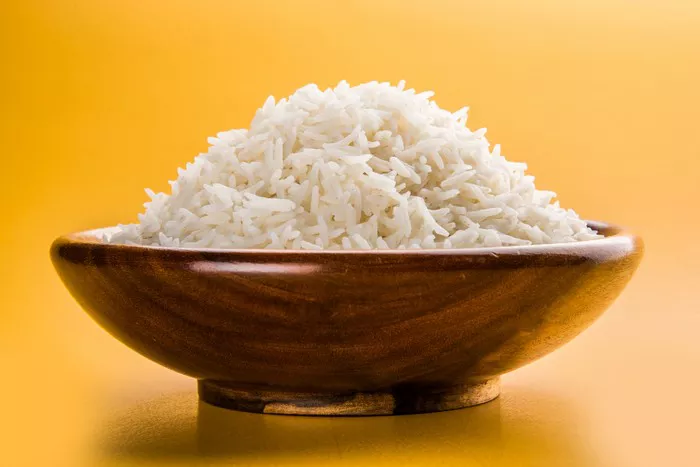Smoothies are a versatile and nutritious option for anyone looking to enjoy a healthy snack or meal. Whether you’re seeking a quick breakfast, a post-workout boost, or just a refreshing drink, smoothies offer endless possibilities. This guide will walk you through everything you need to know to make delicious, balanced smoothies, from basic ingredients and equipment to recipe ideas and nutritional considerations.
1. Basic Smoothie Ingredients and Equipment
Essential Ingredients:
To create a smoothie, you’ll need a few basic ingredients:
Fruits: Fresh or frozen fruits are the cornerstone of most smoothies. Common choices include bananas, berries, apples, and mangoes.
Frozen fruits are particularly useful as they help to create a creamy texture and chill the smoothie.
Vegetables: For added nutrition, you can incorporate vegetables like spinach, kale, or cucumber. These ingredients add fiber, vitamins, and minerals without overwhelming the smoothie’s flavor.
Liquids: To blend your ingredients smoothly, you’ll need a liquid base. Options include water, milk (dairy or non-dairy), fruit juice, or yogurt.
Your choice of liquid will influence the thickness and creaminess of your smoothie.
SEE ALSO: How Do You Make a Chocolate Banana Smoothie?
Optional Additions:
Protein Powder: Ideal for those seeking a protein boost, protein powders come in various flavors and types, such as whey, soy, or pea protein.
Seeds: Chia seeds, flaxseeds, and hemp seeds add extra fiber, omega-3 fatty acids, and a slight crunch to your smoothie.
Nut Butters: Peanut butter, almond butter, or cashew butter can enhance the flavor and add protein and healthy fats.
Necessary Equipment:
Blender: The most crucial tool for making smoothies. A high-powered blender will yield a smoother texture, especially when blending tough ingredients like seeds or fibrous vegetables.
Measuring Cups and Spoons: Useful for measuring out ingredients accurately, especially when following a recipe.
Cutting Board and Knife: Essential for chopping fruits and vegetables into manageable pieces before blending.
2. Step-by-Step Instructions
Choose Ingredients:
Select your ingredients based on the flavor profile and nutritional benefits you want to achieve. For example:
Fruit-Based Smoothies: Choose fruits like strawberries, bananas, and blueberries for a sweet, refreshing drink.
Green Smoothies: Incorporate leafy greens like spinach or kale for a nutrient-packed option.
Protein-Packed Smoothies: Add protein powder, Greek yogurt, or nut butters for a satisfying, protein-rich smoothie.
Wash, Chop, and Prepare Ingredients:
Fruits and Vegetables: Rinse them thoroughly under cold water. Peel and chop them into smaller pieces to ensure they blend smoothly.
Other Additions: Measure out any optional ingredients like protein powder or seeds and set them aside.
Add Ingredients to the Blender:
For optimal blending, follow this order:
Liquids First: Pour your chosen liquid into the blender. This helps the blades move more freely and prevents the blender from getting clogged.
Soft Ingredients: Add softer ingredients like fruits and vegetables next. These blend more easily and help create a smoother texture.
Hard Ingredients: Place harder ingredients like seeds or ice cubes on top of the softer ingredients.
Blend Until Desired Consistency is Achieved:
Start blending on a low setting and gradually increase to high speed. Blend until the mixture is smooth and evenly combined.
If the smoothie is too thick, add more liquid a little at a time. If it’s too thin, add more solid ingredients.
Adjust Sweetness and Thickness:
Sweetness: Taste your smoothie and adjust sweetness if necessary. You can add honey, maple syrup, or a few dates to enhance the flavor.
Thickness: Adjust the thickness by adding more ice for a thicker smoothie or more liquid for a thinner consistency.
3. Smoothie Variations and Tips
Different Types of Smoothies:
Fruit-Based Smoothies: These are typically sweet and refreshing. Combine fruits like berries, bananas, and apples for a classic fruit smoothie.
Green Smoothies: Ideal for those looking to increase their vegetable intake. Blend leafy greens with fruits for a balanced, nutrient-dense smoothie.
Protein-Packed Smoothies: Great for post-workout recovery or a meal replacement. Incorporate protein powder, Greek yogurt, or nut butters.
Flavoring Ideas:
Spices: Add a pinch of cinnamon, nutmeg, or ginger for extra flavor without extra calories.
Extracts: Vanilla or almond extract can provide a subtle, delicious flavor.
Sweeteners: If your smoothie needs a touch of sweetness, try natural sweeteners like honey, agave nectar, or stevia.
Texture Variations:
Smooth: For a perfectly smooth texture, blend thoroughly until there are no chunks remaining.
Thick: Achieve a thicker texture by adding more frozen fruits or ice cubes.
Chunky: If you prefer a chunkier texture, blend for a shorter time or add some whole ingredients after blending.
Troubleshooting Tips:
Lumpy Smoothies: If your smoothie is lumpy, blend for a bit longer or add more liquid.
Too Thick: Thin out your smoothie with additional liquid, adding a little at a time until you reach the desired consistency.
Too Thin: To thicken, blend in more frozen fruits or a handful of ice.
4. Nutritional Considerations
Balancing Fruits and Vegetables:
Fruits: While fruits add natural sweetness and vitamins, they can also be high in sugar. Balance your smoothie by including vegetables to lower the overall sugar content and boost nutritional value.
Vegetables: Leafy greens and other vegetables provide fiber and essential nutrients with fewer calories. Aim for a mix of fruits and vegetables for a balanced smoothie.
Choosing Ingredients Based on Dietary Needs:
Dietary Restrictions: For those with allergies or dietary restrictions, use non-dairy milk (like almond or oat milk), gluten-free protein powder, or omit specific ingredients.
Nutritional Goals: Tailor your smoothie to meet your dietary goals, whether it’s increasing protein intake, boosting fiber, or reducing sugar.
Tips for Making Smoothies More Filling:
Protein: Adding protein powder, Greek yogurt, or nut butters can make your smoothie more satisfying and keep you fuller for longer.
Fiber: Incorporate high-fiber ingredients like chia seeds or oats to improve satiety.
Healthy Fats: Add avocados or nuts to increase the smoothie’s fat content, which can help keep you feeling full.
5. Recipe Examples
Fruit-Based Smoothies:
Berry Bliss Smoothie: Blend 1 cup mixed berries (strawberries, blueberries, raspberries), 1 banana, 1 cup almond milk, and 1 tablespoon honey.
Tropical Paradise Smoothie: Combine 1 cup pineapple, 1 cup mango, 1 banana, 1 cup coconut water, and a squeeze of lime juice.
Green Smoothies:
Spinach and Apple Smoothie: Blend 1 cup spinach, 1 green apple, 1 banana, 1 cup water, and 1 tablespoon chia seeds.
Kale and Kiwi Smoothie: Combine 1 cup kale, 2 kiwis, 1 cup pineapple juice, and 1 tablespoon flaxseeds.
Protein-Packed Smoothies:
Peanut Butter Banana Smoothie: Blend 1 banana, 2 tablespoons peanut butter, 1 cup milk, and 1 scoop protein powder.
Berry Protein Smoothie: Combine 1 cup mixed berries, 1 cup Greek yogurt, 1 cup almond milk, and 1 scoop protein powder.
Dietary Restrictions:
Vegan Smoothie: Blend 1 cup spinach, 1 apple, 1 banana, 1 cup almond milk, and 1 tablespoon hemp seeds.
Gluten-Free Smoothie: Combine 1 cup mixed berries, 1 cup Greek yogurt, 1 tablespoon flaxseeds, and 1 cup water.
Making smoothies is both an art and a science, allowing you to experiment with flavors and ingredients while achieving a balanced and nutritious drink. By following the steps outlined above and considering the variations and tips, you’ll be able to create smoothies that not only taste great but also meet your dietary needs and preferences.
Related Topics:



























